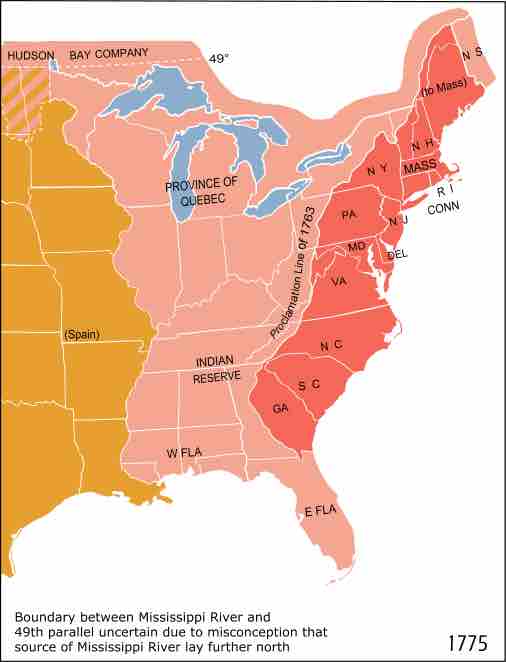Colonial Governments
By 1776, Britain had evolved three different forms of government for its North American colonies: provincial, proprietary, and charter. These governments were all subordinate to the king in London and had no explicit relationship with the British Parliament. Beginning late in the 17th century, the administration of all British colonies was overseen by the Board of Trade, a committee of the Privy Council. Each colony had a paid colonial agent in London to represent its interests.
Provincial Colonies
Provincial colonies, also known as royal colonies, were under the direct control of the king, who usually appointed a royal governor. Provincial colonies included New Hampshire, New York, Virginia, North Carolina, South Carolina, Georgia, and eventually Massachusetts. The governor was invested with general executive powers and authorized to call a locally elected assembly. The governor's council would advise the governor and sit as an upper house when the assembly was in session.
Assembly members included representatives elected by the freeholders and planters (landowners) of the province. The assembly's role was to conceive all local laws and ordinances and to ensure that local laws were not inconsistent with the laws of England. The governor had the power of absolute veto and could prorogue (i.e., delay) and dissolve the assembly at will. Laws could be examined by the Board of Trade, which also held veto power of legislation. Over time, many of the provincial assemblies sought to expand their powers and limit those of the governor and crown.
Proprietary Colonies
Proprietary colonies included Pennsylvania (which included Delaware at the time), New Jersey, and Maryland. Proprietary colonies were owned by a person (always a white male) or family, who could make laws and appoint officials as he or they pleased. This person or family was given the title of Lords Proprietor. Proprietary colonies were governed much as provincial colonies except that Lords Proprietors, rather than the king, appointed the governor. Typically, they enjoyed greater civil and religious liberties than provincial colonies.
Charter Colonies
Charter colonies, also known as corporate colonies or joint stock companies, included Rhode Island, Providence Plantation, and Connecticut. Massachusetts began as a charter colony in 1684 but became a provincial colony in 1691. In a charter colony, Britain granted a charter to the colonial government establishing the rules under which the colony was to be governed. A joint stock company was a project in which investors would buy shares of stock in building a new colony. Depending on the success of the colony, each investor would receive some of the profits in proportion to the number of shares he bought.
Charter governments were political corporations created by letters patent, giving the grantees control of the land and the powers of legislative government. The charters provided a fundamental constitution and divided powers among legislative, executive, and judicial functions, with those powers being vested in officials. The charters of Rhode Island and Connecticut granted the colonists significantly more political liberty than other colonies.

Thirteen original colonies
This map illustrates the 13 original colonies under British rule in North America in the 18th century: Georgia, South Carolina, North Carolina, Virginia, Maryland, Delaware, Pennsylvania, New Jersey, New York, Massachusetts, Rhode Island, Connecticut, and New Hampshire. Lands to the west at that time were colonized by France and Spain. Some land to the west was also set aside for Native Americans.